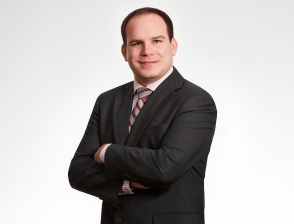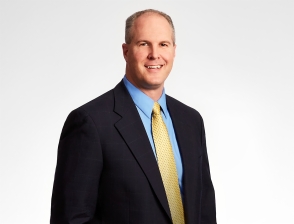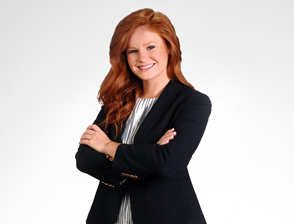Post-GrantOverviewMichael Best’s Post-Grant Practice has the experience and resources necessary to successfully navigate clients through inter partes review (IPR), covered business method review (CBM), and post-grant review (PGR) proceedings. We have achieved successful outcomes for both petitioners and patent owners and have experience with other post-grant proceedings, including ex parte reexamination. We understand there is no one-size-fits-all approach to post-grant proceedings – each client has unique challenges and business objectives. We have a dedicated team providing creative post-grant strategies, litigation prowess, and advanced knowledge in a range of complex technologies. Michael Best has obtained successful results on behalf of clients in a wide variety of industries including advanced manufacturing, appliances, auto parts, computer hardware and software, construction materials, agricultural technology, glass, industrial machinery, medical devices, recreational products, fitness equipment, and tobacco. Michael Best also has a robust Patent Prosecution practice; many on our team handle both prosecution of, and challenges to, patents and patent portfolios. Our attorneys leverage the experience and subject-matter expertise available through our cutting-edge Patent Engineer, Scientist, and Agent program. Through collaboration with these highly trained professionals, we are able to provide high-level, cost-effective services. Our Post-Grant Practice is complemented by our well-established Enforcement, Clearance & Defense practice. With a dedicated team of first-chair patent litigators, we have the resources, experience, and technical expertise to handle both proceedings before the Patent Trial and Appeal Board and any concurrent district court litigation. We are comfortable in the patent office and in the district court providing clients seamless representation in both. Helpful Links
Experience
- We represented a petitioner in the injection molding industry in a series of three IPRs that resulted in some of the first Final Written Decisions addressing novel legal issues. One of the decisions, upheld on appeal, resulted in a precedential decision that assignor estoppel does not apply in post-grant proceedings. That same decision resulted in an opinion by the Federal Circuit Court of Appeals clarifying the application of incorporation by reference principles in IPRs. On remand, the PTAB reversed its original finding and held that the claims at issue were unpatentable.
- We represented a petitioner in the glass industry in a series of two IPRs in the wake of district court litigation. The proceeding resulted in an opinion of the Federal Circuit Court of Appeals addressing the novel issue of the extent to which a writ of mandamus is available in post-grant proceedings. Ultimately, the underlying litigation settled.
- We represented a patent owner in the medical device industry defending an IPR that was filed in the wake of district court infringement litigation. The PTAB denied the petition for inter partes review at the institution phase. The client ultimately went on to obtain a judgment of infringement against the petitioner.
- We represented a patent owner in the spot welding industry in a series of two IPR proceedings. The first petition was denied at the institution phase, and the second petition resulted in a trial on a limited number of claims. The PTAB ultimately concluded all claims were patentable.
- We represented a petitioner in the computer docking industry in an IPR proceeding. The patent-at-issue was owned by a patent owner well known for asserting its patents against a wide variety of targets. Given the technology, the Petition relied on the combination of a large number of prior art patents and publications. During pre-trial proceedings, the PTAB ruled in our client’s favor requiring the patent owner either to submit to a deposition about all paragraphs of its declaration or to withdraw certain paragraphs, which the patent owner ultimately did. The PTAB found all claims unpatentable.
- We represented two petitioners in the golf industry in an IPR proceeding. The patent-at-issue was the subject of several related district court and patent office proceedings that complicated the IPR. The petition involved complicated questions of combining disparate pieces of prior art. The PTAB found all claims unpatentable.
- We co-counseled to represent a well-known petitioner in the office products industry in an IPR involving paper shredders. The challenge was vigorously contested, and at the end of trial, all challenged claims were deemed unpatentable. This outcome avoided our client’s possible liability for patent infringement and allowed our client to sell its product going forward without fear of infringing the challenged claims.
- We represented a petitioner in the fitness industry in two IPRs involving exercise devices (e.g., treadmills) that send and receive data to and from remote locations. The results of these two IPRs was that all challenged claims were found to be unpatentable. This, along with our successful challenge of other patents by ex parte reexamination, resulted in our client avoiding a potential substantial liability for patent infringement and allowed our client to continue developing its smart technology going forward.
- We represented a world-renowned patent owner in the kitchen and bathroom fixture industry in an IPR involving shower fixtures. At the conclusion of the proceeding, all challenged claims were deemed patentable. This outcome gave our client substantial leverage in a related patent infringement lawsuit against the petitioner.
- We represented a petitioner in the fastener industry in an IPR involving a patent on self-piercing rivets. After trial was instituted, the patent owner cancelled all original claims and filed a Motion to Amend. But after receiving our Opposition to the Motion to Amend and receiving the Board’s Preliminary Guidance, the patent owner requested Adverse Judgment be entered. This resulted in all original claims being deemed unpatentable, which opened the door to our client entering the U.S. market.
Related People Preview Attorney's BiographyNick brings strong experience and training as a mechanical engineer to his work in patent preparation and prosecution. A creative thinker who is known for his meticulous attention to detail, he helps clients develop proactive as well as defensive patent strategies. Nick’s focus includes patent preparation, patent portfolio management, patent clearance and patentability searches and analysis, and invalidity opinions.  Preview Attorney's BiographyRich has built a strong track record in intellectual property law, advising innovators at all stages of the patent process, with a focus on mechanical technologies. specializing in all stages of the patenting process for mechanical arts and technologies. He helps clients build grow and manage patent portfolios, avoid or invalidate competitor patents, leverage their IP assets, and defend against infringement claims. Preview Attorney's BiographyChuck represents clients in all phases of intellectual property law. In addition to vigorous and effective litigation, he helps them obtain, maintain, assess, and enforce ownership of valuable intellectual assets in the U.S. and worldwide.Chuck has represented, among others, makers of medical and dental devices, commercial furniture, industrial ovens, packaging and packaging machinery, computer designed metal alloys, sporting goods, consumer electronic accessories, and toys. His clients apprecia ...  Preview Attorney's BiographyKatie is an Associate who focuses her practice on patent matters including the preparation, filing, and prosecution of utility and design patent applications. She brings a technical background in biomedical engineering to bear on her work conducting patentability, right-to-use, validity, and patent clearance studies. She is also experienced with post-grant proceedings including inter partes review.  Preview Attorney's BiographyClients look to Kevin for strategic counsel on the protection of their intellectual property, including acquisition of, enforcement of, and defense against United States and international patents. His strong track record in these areas, paired with a technical background as a product engineer, give Kevin a unique perspective on the challenges facing developers of mechanical, electro-mechanical, and biomedical technologies.
|